During the First and Second World Wars, the concept of Victory Gardening or Victory Gardens, also known as War Gardens, was developed to provide food on the Home Front through urban and suburban agriculture. Victory Gardens were usually grown by individuals and families in their backyards to counter wartime food shortages. During the World Wars, growing Victory Gardens was seen as an act of patriotism.1
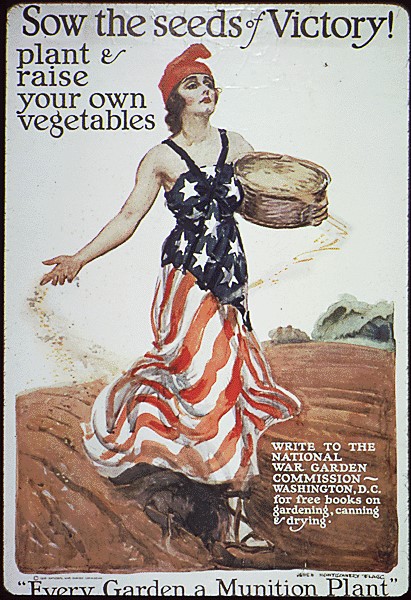
As labor from traditional farms was diverted to the military, the world faced the prospect of reduced food supply, with a food crisis cropping up in Europe at the start of World War I.1 Governments around the world began promoting the use of home backyards and any vacant land to grow food for families.1
These Victory Gardens effectively decreased the pressure on traditional agriculture to provide food during wartime. By some estimates, during World War II, the number of vegetables produced in Victory Gardens in the United States equaled that of commercial production.2
The Originator of Victory Gardening: Charles Lathrop Pack
Charles Lathrop Pack, a businessman, forestry expert, and once one of the five wealthiest men in America, came up with the concept of promoting War Gardens in 1917, just before the United States entered the First World War. Charles Lathrop Pack became president of the U.S. National War Garden Commission, which funded publicity encouraging United States citizens to grow food in their backyards.3
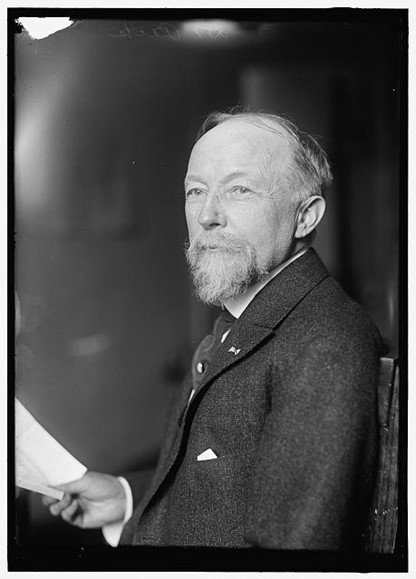
Pack developed the idea that civilians could also help the war effort from home, by growing healthy food and positively influencing the food supply for the military. The U.S. National War Garden Commission created and distributed marketing literature and pamphlets that taught citizens how to grow food on their own.3
War Gardening and Schoolchildren
Schoolchildren were also recruited to grow War Gardens, through the United States School Garden Army, funded by the War Department. Known as “soldiers of the soil”, millions of schoolchildren took up gardening to participate in the war effort.4 Planting and tending to War Gardens gave children a way to contribute, affording children a sense of purpose and sometimes helping combat anxiety if their fathers fought in the war. Not to mention, learning gardening as a valuable skill.
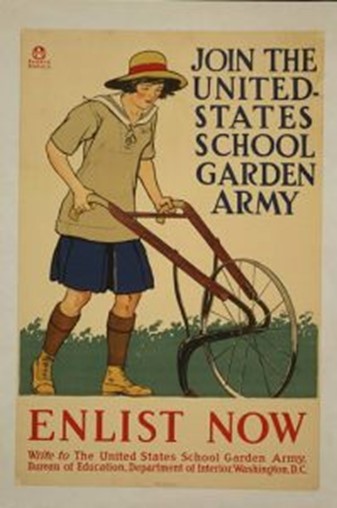
Victory Gardens and the Second World War
During World War II, the idea of War Gardens, now popularly known as Victory Gardens, was revived as the United States faced food rationing. Citizens were encouraged to educate themselves about agriculture and how to produce food in home gardens. Popular vegetables in Victory Gardens included kale, kohlrabi, lettuce, Swiss chard, beans, beets, cabbage, carrots, and other types of food. Eleanor Roosevelt, the First Lady, guided the planting of her own Victory Garden on the White House lawn.1
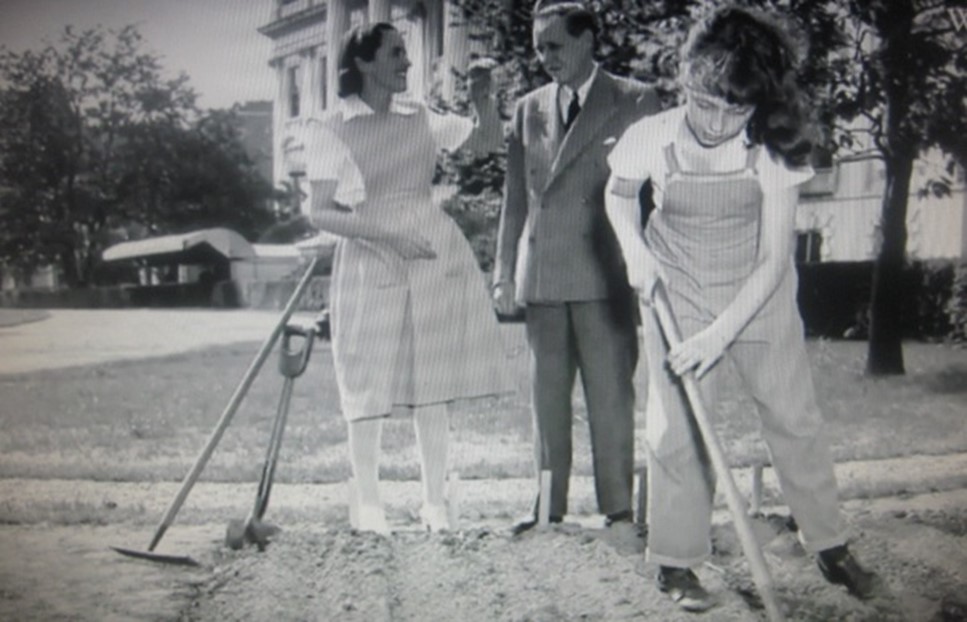
In pamphlets distributed by the U.S. government, citizens were asked to study their home gardens to develop ways to manage pests and produce food more efficiently. Americans were also urged to implement succession planting, where seeding is done at intervals so that vegetables could be harvested throughout the season.1,5
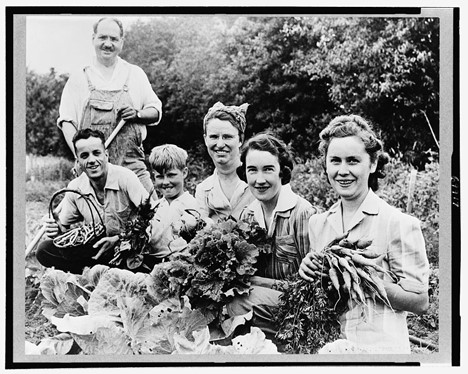
Why We Should Bring Back Victory Gardens
Although the World Wars are over and we currently do not face food rationing, we do face the persistent threat of the climate emergency. As discussed in the Fleet Farming blog “Community Gardens: A Step in the Right Direction,” community gardens and urban agriculture produce food while reducing fossil fuel use for transporting vegetables from farms to people.6 As mentioned in this article, a meal in the U.S. travels 13,000 miles, on average, before reaching your plate.7 Modern Victory Gardens would minimize the carbon footprint of our food.
Another, related issue to the fossil fuels used in transportation of food is the amount of food spoilage that occurs during transport. As the previous Fleet Farming blog emphasizes, up to 50% of food is lost to spoilage while it is being transported.6 The excess fossil fuels used to produce all this spoiled food cause emissions that are warming the atmosphere without good reason.
The world needs to fight for victory against climate change, and one way to do that is through backyard Victory Gardens. In what could be seen as a war for a livable world, urban agriculture and modern-day Victory Gardens can move the needle. The Victory Gardens we plant today will help fight climate change and provide society with a sustainable path forward into the future.
Sources
(1) Schumm, Laura.”America’s Patriotic Victory Gardens.” History. 31 August 2018. https://www.history.com/news/americas-patriotic-victory-gardens
(2) Reinhardt, Claudia. “Victory Gardens.” Farming in the 1940s, Wessels Living History Farm. https://livinghistoryfarm.org/farminginthe40s/crops_02.html
(3) Steen, Tomoko and Allison Kelly. “Charles Lathrop Pack: Pioneering the Idea of the ‘Victory Garden’ in the United States.” Biodiversity Heritage Library. https://blog.biodiversitylibrary.org/2019/07/charles-lathrop-pack-victory-garden.html
(4) “United States School Garden Army, ca WWI.” The Victory Grower, University of California, 2021. https://ucanr.edu/sites/thevictorygrower/Historical_Models/United_States_School_Garden_Army,_ca_WWI/
(5) Hoidal, Natalie. “Big Ideas for Small Gardens: Succession Planting.” University of Minnesota Extension, 20 April 2020. https://extension.umn.edu/yard-and-garden-news/succession-planting
(6) Mousa, Natalie. “Community Gardens: A Step in the Right Direction.” Fleet Farming, 7 July 2021. https://fleetfarming.org/community-gardens-a-step-in-the-right-direction/
Photo Sources
(1) “WWI-era U.S. victory poster featuring Columbia sowing seeds.” National Archives. https://www.archives.gov/digital_classroom/lessons/sow_the_seeds/sow_the_seeds.html
(2) “Pack, Charles Lathrop, of Medical Board. President, National War Garden Commn.” Library of Congress. https://loc.gov/pictures/resource/hec.08264/
(3) Carter, Constance. “The School Garden Army in the First World War.” Library of Congress Prints and Photographs Division, Washington, D.C., 25 January 2017. https://blogs.loc.gov/inside_adams/2017/01/the-school-garden-army-in-the-first-world-war/
(4) Anthony, Carl. “Eleanor Roosevelt’s White House Victory Garden.” Carl Anthony Online, published 10 June 2012. https://carlanthonyonline.com/eleanor-roosevelts-white-house-victory-garden/
(5) Palmer, Alfred or Howard Hollem. “Some Victory Gardeners Showing Their Fine Vegetables.” National Agricultural Library, U.S. Department of Agriculture, 1942-1943. https://www.nal.usda.gov/exhibits/ipd/small/exhibits/show/victory-gardens

